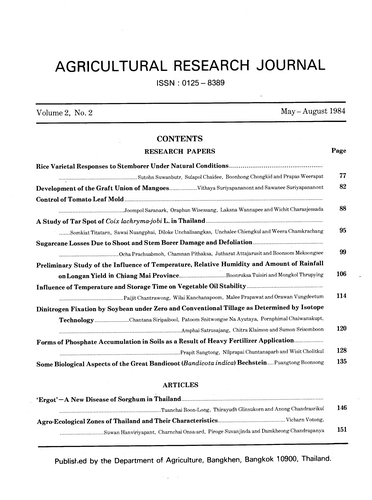Control of Tomato Leaf Mold
Abstract
A study of control measures for the tomato leaf mold caused by the fungus Cladosporium fullvum (Cooke) was conducted during the period 1981 to 1983. Under laboratory conditions eight fungicides were evaluated for their ability to inhibit the germination of fungal spores. Under field conditions the efficacy and most effective spraying schedule of the fungicides was tested. The relationship of cultural practices to the severity of the disease and the susceptibility of 30 tomato varieties to the disease, were also studied.
The fungicide mancozeb was able to inhibit spore germination, and when sprayed at seven dayintervals from transplanting until the crop was 75-90 days old, it was also able to prevent infection by the causal agent. Under glasshouse conditions only two tomato varieties, Vagabond and Oju, showed resistance to the disease. Pruning and construction of supports for the tomato plants were able to reduce the incidence of the disease. An effective and integrated control programme for the disease can be developed based on these results.
Downloads
Published
How to Cite
Issue
Section
License
Thai Agricultural Research Journal



